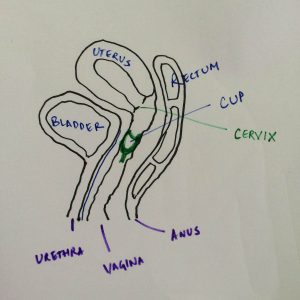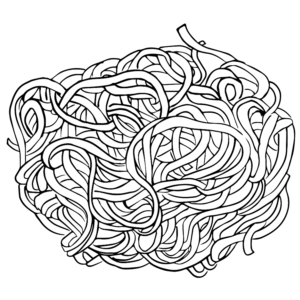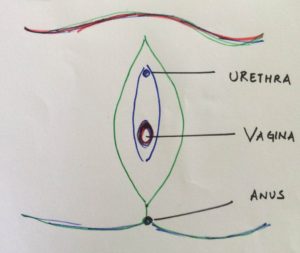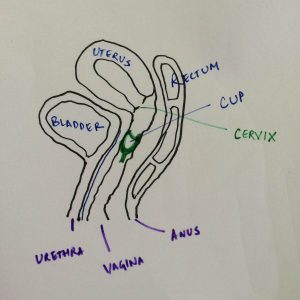Menstrual Cup Pressure on Bladder
Traffic jams in Bangalore are spectacular. Gorgeous red and yellow lights serenade you on either sides, and impatient honks of fellow motorists explode your ears, as you inch your way through bottlenecks and 30-second traffic signals. On a hot summer day, I was stuck in such a jam, which is bad. But what could be worse? – I was sandwiched in a jam-packed bus with a weird sensation of wanting to desperately pee every five minutes in the middle of all this. I couldn’t figure out if the sensations were painful or pleasurable. Or both. Aunt Flo had arrived that morning, but I was using a menstrual cup. Fearing a urinary infection, I rushed home as soon as I could.
Five minutes later, I realized that it was no infection. The moment I took my menstrual cup out, the pain-pleasure sensations magically disappeared! So, the cup was the culprit! The next time I inserted the cup, I turned and twisted the cup in all possible angles before it finally felt right.
Over the last few months, several women on the two sustainable menstruation groups on Facebook that I am a part of presented similar concerns. The menstrual cup was indeed putting pressure on their bladders and worse, it was also interrupted with the flow of urine.
Q. So, why does this happen?
Firstly, the internal organs, especially the reproductive organs are all jostling inside for space in the body. In short, this is how they look.
Before we proceed further, it is important to remember that females have THREE openings between their legs:
- The first one is the Urethra, which is the urinary opening.
- The second is the vagina, out of which come period blood, white discharge and errr… little human beings.
- The third is the anus, out of which comes faeces.
While this is how it looks on the outside, the three different openings connect to various organs on the inside.
The vagina has the bladder on one side, and the rectum on the other side. As you can see in the figures above, the moment you place a cup in your vagina, it may press against the bladder or the rectum, thus creating sensations that you may not entirely be comfortable with.
Q. What can I do about it?
A lot of things. The trick is to try a variety of things and check if any of the options work for you. Some may, some may not. You can try your own variations and see which feels better for you!
- Firstly, you can leave it as it is. If the pressure on your bladder or the sensation to pee often is manageable and does not bother you very much, you can simply ignore it. It’s just that the cup presses against the bladder as it is right next to it, causing not just the I-have-to-pee sensations, but also narrowing of the urethral passage because of the cup pushing on it. This leads to a slow and trickling stream of urine. If you don’t mind spending five extra minutes each time you pee, then let it be.
- The second thing to try is to change the position of the cup. If it is pressing on your bladder, you can try pushing the cup towards the back; if it is pressing on your rectum, you can push the cup towards the front. This may position the cup in a way that it does not interfere with any other function.
- Thirdly, if the cup is right next to the bladder, it may cause more pressure. Therefore, you can try to place the cup lower in the vaginal canal if possible. This may not be an option for women who have a low cervix as they cannot push the cup any lower. What is the Cervix? How to measure?
- Fourthly, in some cases, it might be the rim shape that can cause pressure on the bladder. If you have a cup with a rim that is wide and protrudes, you can try inverting the cup- folding the cup inside out before inserting it.
- Lastly, it could be possible that the cup is hard on your vaginal muscles. If you could go for a softer cup, it may resolve the fierce grip that a harder cup exerts on the vagina. If none of the other options work for you, this might be your only option – buying a softer cup. As investing in another cup is a potentially expensive process, we’d advise you to try out every possible option before you buy another cup!
If you found other tips that worked for you, kindly comment below which could help other women who are struggling to use the cup.








